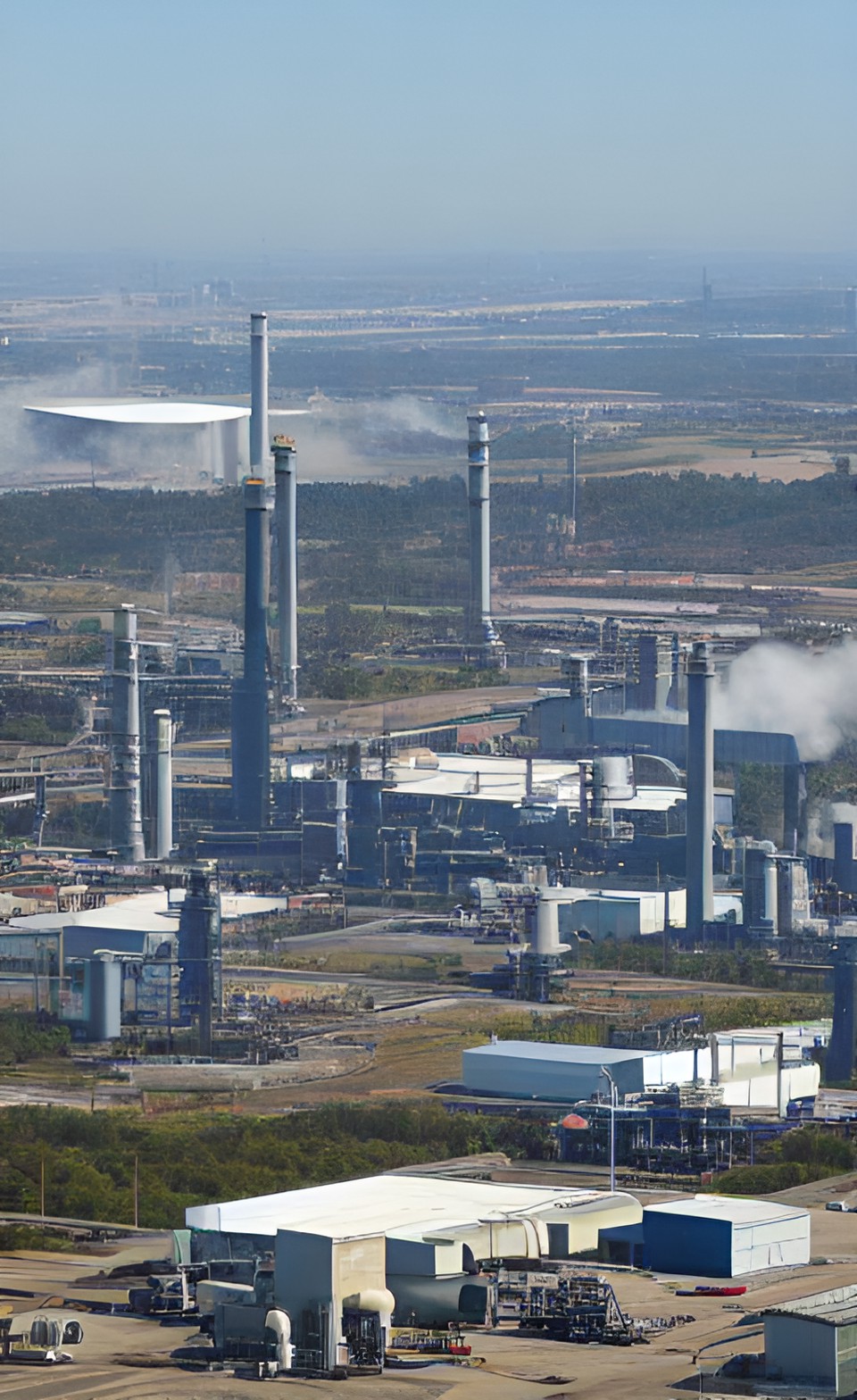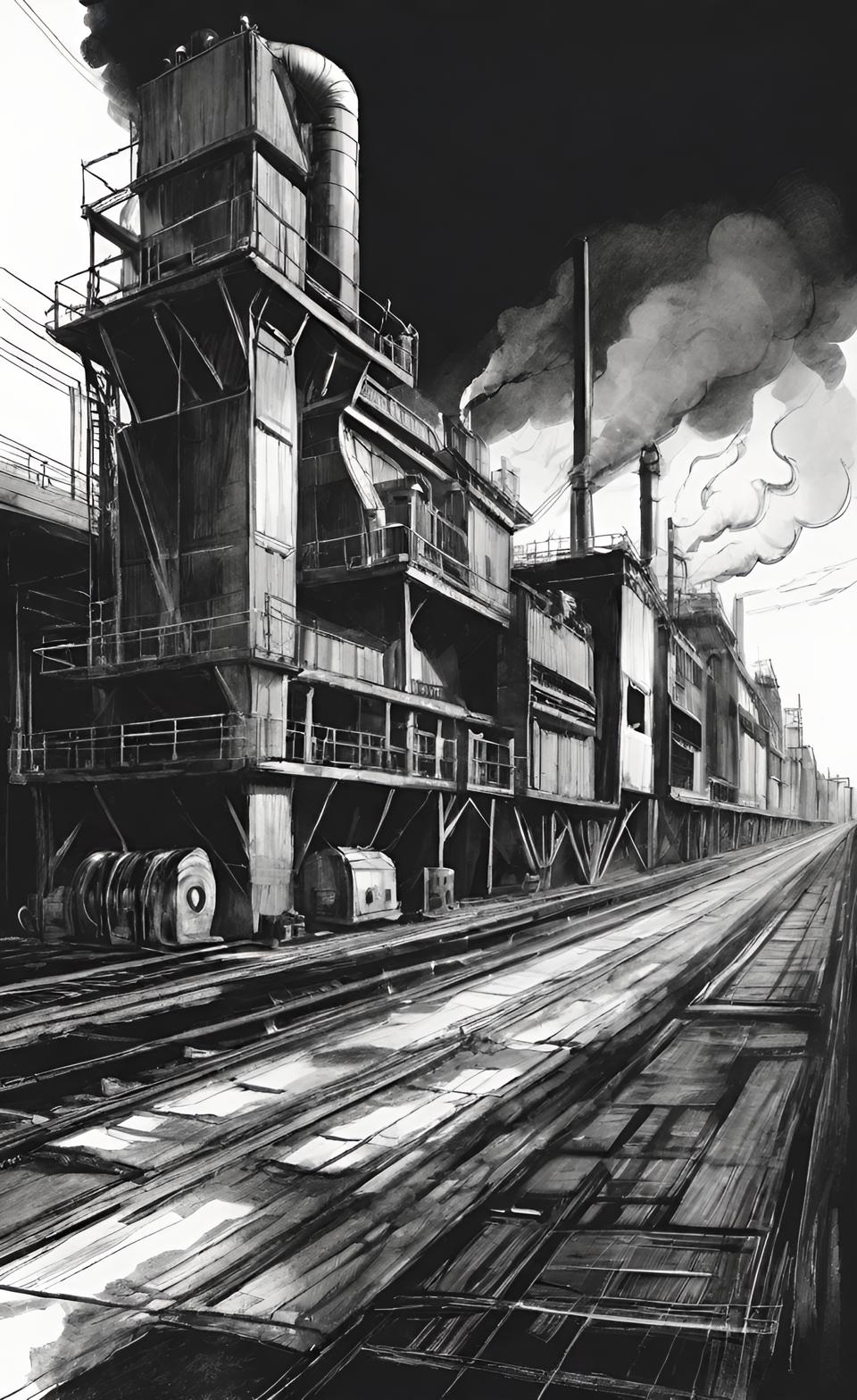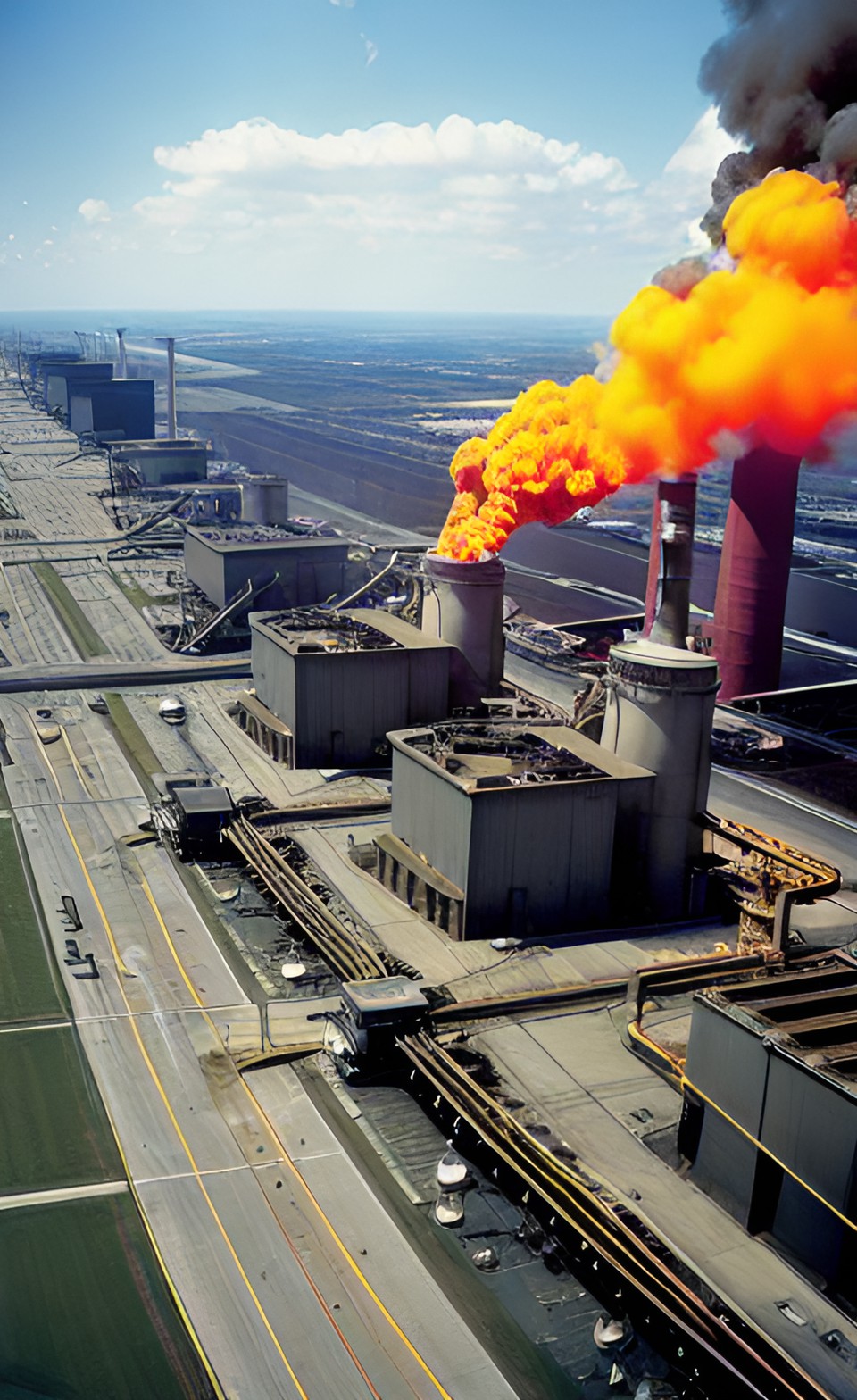- Air Homepage
- Alberta Air Quality
- Prevention of Air Pollution
- What Is a Company Description
AEIR Administrative Information Simplified: What is a Company Description?
The Annual Emissions Inventory Report (AEIR) program tracks industrial emissions in Alberta to protect the environment and encourage economic development. Discover AEIR's administrative aspects, what is a company description, complexities, and documentation of emissions.
Checklist for Section 5 of the AEIR Admin Mandate - Is your AEIR submission complete with the right NAICS code, EPEA ID, building downwash assessment, and precise contact info for three officials? Get the definitive guide to gathering and documenting every mandatory administrative detail for a compliant Annual Emissions Inventory Report and avoid regulatory rejection.
 An overview of the company
An overview of the companySection 5 of the guidance document (Administrative Information) helps you make sure your AEIR submission aligns with regulatory standards by confirming your legal name, industrial operations, and other regulatory requirements. How?
Identify geographical coordinates, working schedules, and any shutdown incidents to generate the best emissions reporting. Here, we break down AEIR into manageable steps to simplify it for a clear understanding of each detail.
Companies such as yours can contribute to this needed transparency by adhering to guidelines and making sure their data is accurate. This reinforces their commitment to environmental stewardship and accountability.
Annual Emissions Inventory Reports (AEIRs) are important for tracking industrial emissions, ensuring companies comply with regulations, and supporting economic development. Transparency and accountability are made easier by detailed administrative, operational, and location info.
Managing emissions effectively ensures a healthier environment. Learn how you can make a difference through AEIR.
5.1 - Gather and Enter Administrative Information
Preparing for the AEIR (Alberta Air Emissions Inventory Program) involves gathering and entering information satisfying what is a company description into the AEIR Form. Here's what you need:
1.1 Information about the AEIR:
Enter the year the emissions inventory applies to, like 2022.
The date the Annual Emissions Inventory Report was completed, using specific date formatting (e.g., September 30, 2023).
Is this a resubmission of the Annual Emissions Inventory Report? (Y/N).
1.2 Information about the company:
What is a company description if it doesn't include the Legal Name of the Company? The name of the company that owns or operates the industrial operation, such as the Trade name: The name under which the company operates, the company's mailing address, including:
- City/District/Municipality/County: Location info.
- The province or territory where the company is based.
- The country where the company is based.
- A company's postal code.
Do you have a second owner/operating company? Indicate if there's a second company. If so provide the second company legal name, trade name, mailing address, City/District/Municipality/County, Province/Territory, country and postal code.
1.3 What is a company description may include information about industrial operations:
- The name of the specific industrial operation or facility covered by the AEIR.
- Holder(s) of EPEA approval: The company or companies that hold the approval.
- The EPEA approval number for the industrial operation.
- 2nd EPEA Approval # (if applicable): Another master EPEA approval number.
- NPRI ID (if applicable): The National Pollutant Release Inventory number.
- Second NPRI ID (if applicable).
 Alberta Air Emission Inventory
Alberta Air Emission InventoryIf more than two NPRI IDs apply to the industrial operation, list them here. Explain any differences between EPEA and NPRI definitions (if any) and Describe any differences between EPEA and NPRI. List any Alberta Energy Regulator facility ID(s) for the industrial operation (list all that apply) as well as Alberta Energy Regulator Approval (Licence) numbers, if applicable.
Is this industrial operation part of an Alberta Airshed? (Y/N)
If so, which airshed? What is a company description needed for? AEIR reports emissions data accurately when administrative information is gathered and entered correctly. Make sure the emissions inventory is accurate by double-checking.
1.4 Industrial Operation Temporal Information
This section of the AEIR Form reports the timing and status of industrial operations. Here's what it needs:
- The date when the industrial operation started emitting pollutants. You can estimate the date if you don't know the exact date.
- Date of decommission: If the industrial operation shut down permanently during the reporting year, you'd put that here.
This is an estimate of when the operation might shut down permanently. Emissions are forecasted with this info.
- During the year, indicate whether the operation was active, temporarily shut down, decommissioned, or not yet running.
- Describe whether the operation ran normally or if there were any exceptional conditions.
- Indicate how many days a week the operation usually runs.
- Indicate if the operation runs on holidays.
- Is operation open 24 hours a day.
- Provide weekday start and end times.
- Open for business on weekends? When?
- Hours of Operation: The total number of hours it works.
What is a company description also to include? You can provide monthly data in hours or percentages. For instance, you'd tell them how many hours it operated in January or what percentage of the annual production it did during that month. This field adds up all the monthly hours or percentages to make sure they match. It also helps track when an industrial operation operates and emits pollutants, which is important for environmental reporting.
5.2 - Gathering and Entering Information on Sector, Activity, and Product Capacity, part of What is a Company Description
The AEIR needs information about the type of industry, its activities, and the amount of products it can make. The AEIR Form requires filling out worksheets about the industry's sector, activities, and product capacities.
1.5 Information on the industrial operation sector
You need to use specific codes to describe your industry's category and activities. From the dropdown menu, you might choose Oil Sands - Mining, Processing, and Upgrading.
Identify your industry with a six-digit NAICS code. It gives a compact answer to what is a company description. Provide a second NAICS code if necessary. For reporting, these codes help classify industries.
 Using sector-specific NAICS codes enhances reporting accuracy.
Using sector-specific NAICS codes enhances reporting accuracy.1.6 Information about industrial operations
The AEIR Form asks about the main and extra activities of the operation. Describe the main activities, like Oil Sands Mining, that explain why the operation exists. List secondary activities, like Electric Power Generation, that aren't the main focus but are still part of the operation. This part of what is a company description helps us know what the industrial operation does and why.
1.7 Product Capacity Information for Industrial Operations
The AEIR Form asks about the main and extra products made by the company. The main and extra products the operation produces or stores. Choose whether it's a main or extra product. Enter the highest amount the operation can make of each product.
Enter the usual amount of each product the operation makes. Tell the form what units are used to measure the product. Tell how often the product is made, like per day or per year. You'll get a better idea of what is a company description here, what the industrial operation makes and how much it makes.
5.3 - Gather and Enter Location Information
The AEIR Form 5.3 is where you fill in specific location information about the industrial operation. Here's how it works.
1.8 indicates what you need to know about the location of the industrial operation:
- The base elevation (m ASL) is the height above sea level at a single point. It could be 671 meters, for example.
- Latitude (Decimal, NAD 83): North-South position of the operation on Earth. Take 53.53610, for instance.
- Longitude (Decimal, NAD 83): East-west position of the operation on earth. Here's an example: -113.50340.
1.9 Legal Land for Industrial Operations
The legal land description of the industrial operation is required here. Details include:
- Subdivision: A specific area of land.
- A quarter section is a small group of legal subdivisions.
- A section is a bigger area within a township.
- The township indicates (roughly) how far north the industrial operation is.
- Range: How far the operation is from the reference meridian.
- These land surveys start at the meridian located to the east.
1.10 The Simplified Industrial Operation Boundary Information:
- Here, you'll need to draw a simplified boundary around the industrial operation.
- Create a simple polygon by specifying latitude and longitude points of the corners.
- The boundary should be described by at least four and up to twenty vertex coordinate pairs.
- If you have a rectangular boundary, you'd provide coordinates for the four corners: northwest, northeast, southeast, and southwest.
This piece of what is a company description helps pinpoint exactly where the industrial operation is located, both in terms of its geographic coordinates and its legal land description. For tracking emissions and ensuring environmental compliance, it's essential.
5.4 - Gather and Enter Building Information
Building information is collected and entered in this part of the AEIR Form. Here's how it works:
- Dimensions of the industrial operation building
- The purpose of this section is to give you information about buildings that could affect the path of air emissions because of their height or proximity to release points (like stacks).
- If a release point is on top of or near a tall building, the building's size and dimensions matter.
- Downwash could happen if the release point's height is less than 2.5 times the building's height and if the stack's width or height is within 5 times the building's width or height.
Here's what you need to do:
- (Yes/No) Has a building effects (downwash) assessment been done for the industrial operation?
- You'll need to enter the name of each building (e.g., Main Powerhouse Building).
- If you have release points on the building, list them.
- The number of tiers (levels) in the building.
- Provide the building's base elevation in meters.
What is a company description without listing these assets? Describe the corners or vertices of the building. Report the number of corners or vertices, their heights, and their coordinates in easting and northing.
Here's some more:
- Only the buildings that could affect air emissions need to be reported.
- You don't have to fill out the building information fields if no downwash assessment has ever been done for the industrial operation.
- You report the first 16 vertices in one row and continue in the next row if necessary.
- There's a supplemental worksheet if you have over 100 buildings to report.
It's crucial to understand how buildings might impact your industrial operation's emissions.
5.5 - Gather and Enter Contact Information
This part of the AEIR Form is where you enter contact info. This is a key part of what is a company description:
- Mailing address for industrial operations.
- Provide the mailing address for your industrial operation, including the street address, the city, the province/territory, and the country.
- Communication and regulation need this info.
AEIR Industrial Operation Technical Contact:
- In this section, you need to provide the contact details for the technical contact. Questions about the data will be answered by this person.
- Please include your first and last name, professional designation (if applicable), position/title, phone number, extension (if applicable), fax number, email address, mailing address, city, province/territory, country, and postal code.
 Making Contact
Making ContactIndustrial Operation Certifying Official:
- You need someone who can bind your organization and sign off on environmental reports to certify the AEIR. Certifying Officials do this.
- First and last name, professional designation (if applicable), title, phone number, extension (if applicable), fax number (if applicable), email address, mailing address, city, province, country, and postal code are all required for the Certifying Official.
AEIR Public Contact for Industrial Operations:
- Provide the contact info for the person who handles public inquiries about your AEIRs.
- Include their first and last name, professional designation (if applicable), position/title, phone number, extension (if applicable), fax number (if applicable), email address, mailing address, city, province/territory, country, and postal code.
The consultant working on the AEIR (if applicable):
- Provide information about the consultant who prepared your Annual Emissions Inventory.
- If you used a consultant, what is a company description? Give the name of the consulting company, the consultant's first and last name, the consultant's professional designation (if applicable), the position/title, the phone number, extension (if applicable), the fax number (if applicable), the email address, the mailing address, the city, the province, the country, and the postal code.
Other Consultants Working on the AEIR (if applicable):
- It's okay to use a second consultant, but you have to provide their information separately.
- The name of the consulting company, the consultant's first and last name, the professional designation (if applicable), the position/title, the phone number, extension (if applicable), the fax number (if applicable), the email address, the mailing address, the city, province/territory, and the zip code.
Don't leave any required fields blank, as this information is crucial for regulatory compliance and communication about your industrial operation.
5.6 - Gather and Enter Information on Operational and Release Issues and Incidents
This section is where you gather and enter information about operational issues and incidents that might have affected air emissions. What you need to know starts with:
1.18 Overview of operational and release issues/incidents:
- Reporting operational and release issues or incidents is part of the AEIR (Annual Emissions Inventory Report).
- Provide details like reference numbers (if applicable), dates, times, durations, descriptions of the events, their impact on air emissions, associated release points, use of emergency sources, and substances released.
- Only significant incidents related to emission limits, pollution control, unauthorized air releases, or ones that have a big impact on air emissions need to be reported.
- Your industrial operation's air emissions can be impacted by any of these issues.
 AEIR Compliance Requires Detailed Incident Documentation
AEIR Compliance Requires Detailed Incident DocumentationOperational and Release issues/incidents in your 'what is a company description' report:
- Have there been any issues or incidents this year? (Y/N)
- If any issues or incidents happened, select "Yes." Otherwise, select "No."
Temporal information about the issue/incident:
- Enter a reference number if you have one.
- Provide the start date of the issue.
- Include the start time (use a 24-hour clock).
- Date: Let us know when it ends.
- Make sure you mention the end time (on a 24-hour clock).
- Enter the duration (hours) of the issue or incident.
- (Days): How long did it last?
Description of the issue/incident:
- Describe the issue or incident briefly.
- Impact on Air Emissions: Tell us how the event affected air emissions.
- Release Point Descriptive Names (if applicable): List the release points associated with the event.
- In the same vein, if non-point sources are involved, list their names.
- Provide a list of any emergency release points used during the event (if applicable).
Released substances (if applicable)
Provide the following info for each substance released:
- The name of the substance released.
- The substance's emission limit.
- Units for the limit (e.g., kg/hour).
- The amount of substance released during the event.
- Units of release: The estimated emissions (e.g., kg/hour).
It helps authorities and others understand any significant events that affected air emissions at your industrial operation. Transparency and compliance are key.
5.7 - Gather and Enter Info on Major Source and Plant Shutdowns
In this section, you'll gather and record information about major source and plant shutdowns that might have impacted your operation. Here we go:
What is a company description without shutdown information for major sources and plants?
- Report major source and plant shutdowns in the AEIR (Annual Emissions Inventory Report).
- Please provide details like reference numbers (if available), dates, times, durations, brief descriptions, impact on air emissions, and any affected release points, non-point sources, or equipment.
- Only shutdowns that have a significant impact on air emissions or production need to be reported.
- It helps identify and explain major shutdowns that affected overall air emissions at your industrial operation.
 Oops!
Oops!Shutdown information for major sources and plants:
- Did any major sources or plants shut down this year? (Y/N)
- If any significant shutdowns happened, select "Yes." Otherwise, select "No."
Temporal information about shutdown:
- Enter a reference number if you have one.
- Provide the shutdown event's start date.
- Include the start time (use a 24-hour clock).
- Date: Let us know when it ends.
- Make sure you mention the end time (on a 24-hour clock).
- Specify how long the shutdown lasted (days).
Description of shutdown:
- Give a brief description of why the major source or plant was shut down.
- Release Point Descriptive Names (if applicable): Identify any release points affected by the shutdown.
- Names of any affected units, processes, or equipment associated with release points.
- Non-point source descriptive name(s) (if applicable): List any non-point sources affected by the shutdown.
- If "Combined Large Point Sources" are being reported as non-point sources, identify any associated units, processes, or equipment.
This helps authorities and others understand major events like plant shutdowns that affected air emissions at your industrial operation. Transparency and compliance are key.
5.8 - Gather and Enter Plant and Combined Source Limits and Performance Targets
This section is about gathering and recording information about plant and combined source limits and performance targets.
In the AEIR, you have to give specific details about your industrial operation's limits and performance targets as part of what is a company description. Limits and targets help you stay within acceptable environmental standards when it comes to air emissions. This information needs to be entered into the AEIR form.
Plant and combined source limits (Worksheet 1.20):
- Are there any plant or combined source limits? Y/N
- Please let us know if your operation has any plant or combined source limits.
Limits for plants or combined sources (select):
- You can report a plant limit or a combined source limit.
Names of Release Point or Non-Point Sources (only for Combined Source Limits):
- List the release points or non-point sources covered by this limit if it's a combined source limit.
- Approval Limit for Plants or Combined Sources - Substance or Parameter:
- This limit is associated with a substance or parameter.
- Approval Limit for Plants or Combined Sources
- Tell us how many you're allowed.
- Approval Limits - Units (e.g., kg/hour, kg/MWh, tonnes/day, etc.). Please specify the units (e.g., kilograms per hour) for this limit.
- Plant Limit - Conditions (if any). Describe the conditions for this limit.
 Plant and Source Limits keep things Fresh
Plant and Source Limits keep things FreshWorksheet 1.21: Plant and Combined Source Performance Targets:
- Are there any plant or combined source performance targets? Y/N
- If you have any plant or combined source performance targets, let it be known.
- Performance Target for Plants or Combined Sources (select). You can report a plant performance target or a combined source performance target.
- Descriptive names for Release Points or Non-Point Sources (only for Combined Source Performance Targets). List the release points or non-point sources this target covers if it's a combined source performance target.
Performance Target Substance or Parameter for Plants or Combined Sources:
- This performance target is associated with a substance or parameter.
- Quantity of Plant or Combined Source Performance Target. Specify the quantity this target is aiming for.
- Performance Targets for Plants or Combined Sources. Give the unit (e.g., tonnes per year) for this target.
- Performance conditions (if applicable). Describe the conditions for this performance target.
Your information helps authorities and others understand your limits and targets for managing and controlling emissions from your industrial operation.
5.9 - Identification and Reporting of Negligible Sources
This is all about identifying and reporting negligible sources and substances. Let's break it down here.
Negligible Sources Identification and Reporting (Worksheet 1.22):
- Sources that are negligible don't need to report their emissions in detail.
- List all negligible sources and explain why they're negligible.
- This information should be on the AEIR form (for what is a company description) if there are any.
Negligible Sources Information:
- Were there any negligible sources left out? Y/N
- Tell us if there were any sources that weren't required to report emissions.
Here are all the sources that were deemed negligible:
- Make sure you include both release points and non-point sources.
- Explain why they're negligible.
- Authorities can figure out why these sources weren't reported with your help.
5.10 Reporting Negligible Substances (Worksheet 1.23):
Some substances have such low emissions that they're considered negligible, too. This makes an important part of what is a company description.
- List these Schedule 1 substances and explain why they're negligible.
- The AEIR form should also include this info.
Negligible Substances Information: Did any Schedule 1 substances get deemed negligible? Y/N
Let us know if any Schedule 1 substances were excluded from reporting because they were deemed negligible.
Provide a brief explanation of any Schedule 1 substances deemed negligible:
- Make sure you include the names of these things.
- Why are they considered negligible?
- Authorities can then figure out why these substances weren't reported.
This ensures you're reporting only significant sources and substances, and excluding minor ones that don't have a big impact on emissions. This simplifies the reporting process and focuses on what's important for the environment.
AEIR Consulting Services from Calvin Consulting Group Ltd.
Calvin Consulting Group Ltd.'s specialized services simplify AEIR compliance for Alberta industrial facilities. We provide expert guidance for navigating EPEA approvals, completing AEIR forms accurately, and meeting emission thresholds.
Data quality control methods outlined in Section 3.0 of the Alberta AEIR Program Handbook ensure precise reporting of Schedule 1 and 2 materials. Contact us for tailored assistance in streamlining your AEIR submissions, ensuring compliance with regulatory standards, and completing them by September 30. Reach Barry here:
You can rely on Calvin Consulting Group Ltd. to simplify your emissions reporting journey and enhance your environmental stewardship efforts.
Clean air is our Passion...Regulatory Compliance is our Business.
Find out more about company identification, operational details, and emission-related info in the administrative sections of AEIR.
Learn how to simplify complex processes into do-able steps, from legal names to shutdown events. Make AEIR submissions easier by simplifying procedures. Promote transparency and adherence to standards by keeping an eye on details in environmental reporting.
Do you have concerns about air pollution in your area??
Perhaps modelling air pollution will provide the answers to your question.
That is what I do on a full-time basis. Find out if it is necessary for your project.
Have your Say...
on the StuffintheAir facebook page
Other topics listed in these guides:
The Stuff-in-the-Air Site Map
And,
Thank you to my research and writing assistants, ChatGPT and WordTune, as well as Wombo and others for the images.
OpenAI's large-scale language generation model (and others provided by Google and Meta), helped generate this text. As soon as draft language is generated, the author reviews, edits, and revises it to their own liking and is responsible for the content.


New! Comments
Do you like what you see here? Please let us know in the box below.